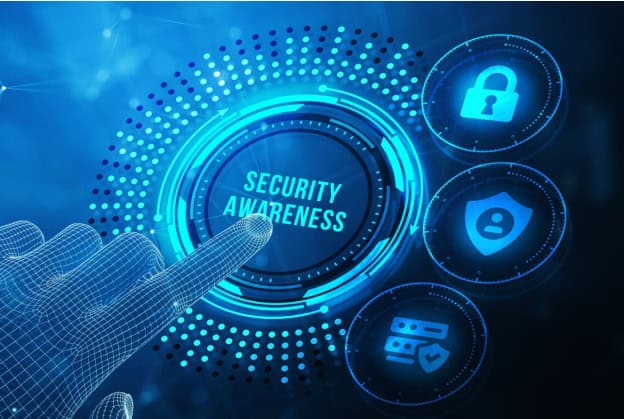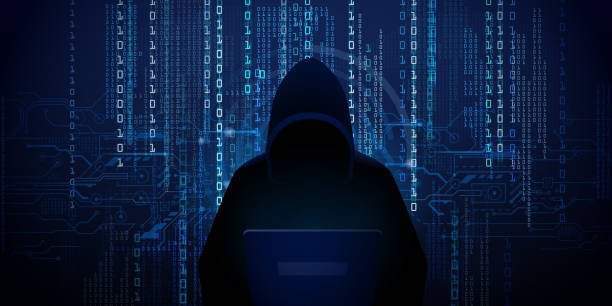There was a time when the walls of a company were made of bricks and glass, and security meant locks, guards, and ID badges. Those walls are still there, but the true battleground has moved into a different dimension — the digital world. Today, attackers do not need to be in the same city, or even the same continent, to breach your defenses. They just need a moment of human error.
In this vast, invisible warzone, the greatest vulnerability is not always a weak password or outdated software — it is often a human being who, for one second, clicks on the wrong link, downloads the wrong file, or trusts the wrong person. Cybercriminals know this. That is why they aim their most powerful weapon at us: deception.
And this is where the idea of the human firewall becomes vital.
The Human Firewall: What It Really Means
When security experts talk about a “firewall,” most people imagine a line of code or a piece of hardware sitting between a private network and the internet, filtering out malicious traffic. But there is another type of firewall that is far more critical — the one made up of people.
A human firewall is a workforce trained to detect, resist, and respond to cyber threats. It is not a single person or a single department. It is every employee, from the front desk to the executive suite, acting as an intelligent, alert, and resilient defense layer.
This does not happen automatically. Humans are not born with an instinct to recognize phishing emails, fake invoices, or deepfake scams. We are wired for trust and efficiency — qualities that cybercriminals exploit. Building a human firewall requires deliberate effort, training, and cultural change inside the organization.
Why the Human Factor Is the Weakest Link
The data is sobering. Research across industries shows that over 80% of data breaches involve human error. That number includes clicking on malicious links, using weak passwords, misconfiguring cloud services, or falling for social engineering tactics.
It is tempting to think the answer is more technology — better firewalls, smarter intrusion detection systems, advanced encryption. These are important, but they are not enough. Even the best lock on a door is useless if someone holding the key is tricked into opening it for a stranger.
Cybercriminals have learned that it is easier to hack people than systems. Instead of trying to break through a company’s technical defenses, they find it far more efficient to manipulate the humans inside those defenses. They send convincing emails that look like they come from the CEO. They create urgent fake invoices that appear to be from a trusted supplier. They pretend to be IT support asking for your password.
The weakest link can become the strongest — but only through awareness, education, and vigilance.
The Evolution of Cyber Threats and Why Training Must Keep Up
Two decades ago, most cyberattacks were brute force: viruses, worms, and trojans that spread across networks indiscriminately. Today, attacks are far more sophisticated, targeted, and psychological.
Phishing has evolved from poorly spelled emails with obvious red flags into carefully crafted messages that mimic legitimate correspondence with uncanny precision. Ransomware no longer spreads blindly; it often targets organizations with valuable data, striking at moments when they are most vulnerable. Deepfake audio and video can now impersonate executives to authorize fraudulent transactions.
This rapid evolution means that security awareness training cannot be static. What was considered cutting-edge training five years ago is outdated today. Employees must be continually educated on the latest attack methods, suspicious behaviors, and protective measures.
What Security Awareness Training Really Is
Security awareness training is not about turning every employee into a cybersecurity engineer. It is about building instinct. It is about creating a mindset where safety checks become second nature, where employees pause before clicking, question the unusual, and speak up when something feels off.
At its core, security awareness training is an ongoing program that equips employees with:
- An understanding of common and emerging cyber threats.
- The ability to recognize warning signs.
- The confidence to report suspicious activity without fear of blame.
- A shared sense of responsibility for the organization’s security.
It blends education, simulation, and culture change. A lecture alone will not do it; neither will an annual PowerPoint presentation that everyone clicks through while thinking about lunch. True training engages people, challenges them, and makes them part of the solution.
The Psychology of Social Engineering
To build an effective human firewall, we must understand the enemy’s playbook — and social engineering is their favorite chapter.
Social engineering exploits human psychology rather than technical flaws. Attackers use urgency to pressure people into acting without thinking. They use authority to make demands seem legitimate. They play on curiosity, fear, or even kindness to get what they want.
For example, an employee receives an email from “IT Support” saying their account has been compromised and they must reset their password immediately. The link looks genuine, the tone is urgent, and the fear of losing access prompts action — exactly as the attacker planned.
Security awareness training exposes these tactics, breaking the illusion of legitimacy and empowering employees to see the manipulation for what it is.
Building a Culture of Security
Training alone is not enough unless it is backed by a culture that supports security-conscious behavior. This means creating an environment where employees feel safe to question unusual requests — even from superiors — and are encouraged to double-check before acting.
A culture of security values awareness over blame. Mistakes should be treated as learning opportunities, not punishable offenses that drive problems underground. Employees should know that reporting a suspicious email is not only acceptable but commendable.
Leaders must model this behavior. When executives openly participate in training, share their own near-miss experiences, and respond constructively to reports, they send a powerful message: security is everyone’s job.
The Role of Simulation in Training
One of the most effective tools in security awareness training is simulation. Just as fire drills prepare people for emergencies, simulated phishing attacks prepare employees for real-world cyber threats.
In a simulation, employees receive a fake phishing email crafted by the security team. If they click on the malicious link, they are immediately given feedback explaining what they missed and how to spot such attempts in the future. Over time, these exercises sharpen instincts and reduce click rates.
Simulations should be varied and unpredictable, covering not just email but also phone calls (vishing), text messages (smishing), and physical security breaches. The goal is to create a workforce that is alert across all channels.
Security Awareness as a Business Advantage
Some organizations treat security training as a compliance checkbox — something to get through once a year to satisfy regulations. This is a mistake. A strong human firewall is not just about avoiding breaches; it is about enabling the business to operate confidently in a connected world.
When employees are security-conscious, they handle customer data more responsibly, protect intellectual property, and reduce downtime caused by incidents. This trustworthiness becomes a competitive advantage, especially in industries where data security is a deciding factor for clients and partners.
Measuring the Impact of Training
Building a human firewall is not a one-and-done project. It requires measuring progress, identifying weaknesses, and continuously improving.
Organizations can track metrics such as:
- Click rates on simulated phishing emails.
- Number of suspicious incidents reported.
- Employee confidence in identifying threats.
These metrics help refine training, ensuring it remains relevant and effective.
The Emotional Connection: Why People Protect What They Value
One of the most overlooked aspects of security awareness is emotional engagement. People are more likely to protect something when they understand its value.
When employees see data as abstract numbers on a screen, they may not feel urgency. But when training connects that data to real people — customers who trust the company with their personal information, patients whose medical records must remain private, families relying on financial stability — the stakes become human, not just technical.
Good training tells stories of real breaches, real losses, and real consequences. It shows how one person’s vigilance prevented a disaster. It makes security personal.
The Continuous Journey
Cybersecurity is a moving target. New threats appear daily, and attackers adapt faster than many organizations can react. This means building a human firewall is not an event but an ongoing process.
Regular refreshers, updates, and practice are essential. So is leadership support, budget allocation, and integration of security awareness into everyday operations.
The companies that thrive in this new digital reality will be those that understand a simple truth: technology alone cannot save you. People can.
The Vision of a Resilient Workforce
Imagine a workplace where every employee — from the receptionist to the CEO — has the awareness of a trained security professional, the instincts of a detective, and the courage to act when something seems wrong. Imagine a culture where security is not a chore, but a shared value, as natural as turning off the lights when you leave a room.
This is the human firewall. It is not perfect. Mistakes will still happen. But with each employee trained, aware, and engaged, the wall becomes stronger, higher, and harder for attackers to breach.






